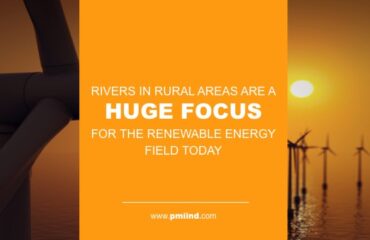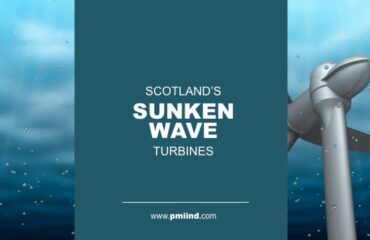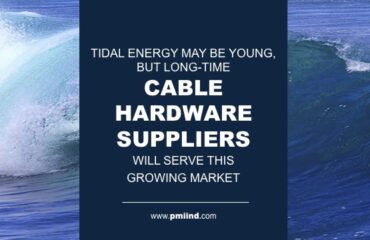The corrosive effects of saltwater on subsea cables and accessories are well known.
Freshwater doesn’t have quite the same impact, but it still raises a range of issues for offshore wind developers. The saltwater vs. freshwater comparisons are becoming more relevant as offshore windfarm projects along the Great Lakes of North America — the largest expanse of freshwater on Earth — inch closer to reality.
Why the Great Lakes? Anybody who ever felt a summer gust from Lake Michigan in Chicago’s Loop or an icy blast from Lake Erie in downtown Cleveland understands. The vast open spaces of the Great Lakes allow strong Midwest winds to blow unimpeded.
Is it only a matter of time until the windfarms dotting the plains of North America extend to the Great Lakes? Perhaps, provided developers can apply the lessons of saltwater windfarms to the distinct needs of freshwater environments.
Saltwater challenges for subsea cables and accessories
Saltwater environments have specific impacts on subsea cables and accessories:
- Oxidation: Saltwater can corrode the surface of any metal. Carbon steel, for instance, is strong and cost-effective, but requires treatment to resist oxidation.
- Anodic corrosion: Because saltwater is an electrolyte, it triggers an electrochemical process at the contact points of dissimilar metals, such as cooper, magnesium, and carbon steel, that leads to corrosion.
- Live current: Subsea cables carrying current can generate electromagnetic fields of varying magnitudes. When the flow of water is perpendicular to the axis of the cable, the magnetic field begins interacting with seawater, or a charged object. There are variables which impact the intensity of the field which in turn impacts the amount of damage that can occur. Depending on the speed of saltwater passing over the cable, the diameter of the cable, and the amount of current, some high-velocity tidal areas can cause corrosion.
- Aquatic species: Barnacles, in particular, attach themselves to everything that goes in seawater. Once they attach themselves, they are extremely difficult to remove.
Freshwater challenges for subsea cables and offshore wind projects
Though freshwater is not nearly as corrosive as saltwater, it can be problematic in three ways:
- Ice: Each year, a significant portion of the Great Lakes is covered with ice, which complicates the construction offshore wind projects. During the winter of 2013-2014, 92% of the Great Lakes were frozen over. Companies in Scandinavia have figured out how to build towers in lakes that freeze, so ice need not be a deal-breaker in the Great Lakes.
- Pollution or foreign substances: Pollutants are wildcards in the construction of windfarms because it’s difficult to predict future pollution levels. Thus, engineering subsea cables and accessories to resist the impact of pollutants is imperfect at best.
- Human uses: The Great Lakes are busy shipping routes and recreational areas, and any offshore wind farm project would have to keep those factors in mind. Ships hauling goods and raw materials could potentially damage or threaten the electrical cables from freshwater windfarms. Boundaries would also have to be set up to prevent contact with boats and the people in them.
The power is there — the question is how we use it
The winds over the Great Lakes average 16 mph, according to the Natural Resources Defense Council. And governing bodies along the U.S. side of the Great Lakes are looking toward a future that includes windfarms, the Sierra Club notes on its website.
We mention these advocacy groups because they cautiously support windfarm development in the Great Lakes. Offshore windfarms attract well-deserved environmental scrutiny, but they still represent sources of clean, renewable energy sources for densely populated areas. The continued support of environmental groups will be key to the rise of offshore wind in the Great Lakes.
Power draw makes a case too. Summer months require more energy for climate control which can cause major outages when the grid is not prepared. Having an additional energy supplement will help prevent outages and make grids more reliable.
As we’ve noted many times in our blog, PMI is committed to supplying the rugged, long-lasting subsea cable accessories that windfarms need to defend their power lines against the subsea dangers.
Related articles:






